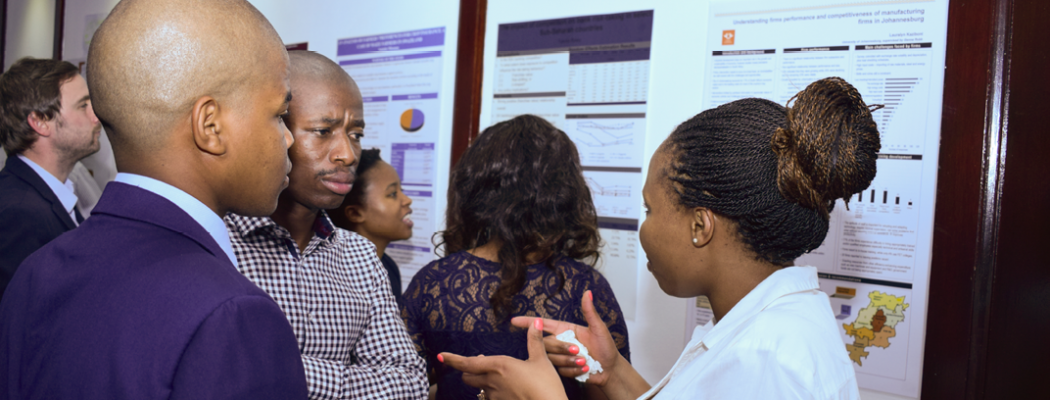Gender pay gaps on the rise in South Africa
New analysis of income data in South Africa shows the gender pay gap—how much more men earn than women—has increased. According to findings from a study conducted on the SA-TIED programme, in 2021, women in South Africa earned 78 cents for every rand earned by men, compared to 89 cents in 2008. This is a loss for gender equality, a trend that should urgently be addressed.
In a new study, we estimate the gender pay gap in South Africa with income data from the South African Revenue Service from 2008–21. Over this period, the pay gap increased, with median male salaries increasing faster than those for women.
The disparity is greatest at the bottom and the top of the income distribution. The dynamics of the gender wage gap are incredibly nuanced in South Africa and inequalities in pay are different for the poorest 10% and the richest 10% of income earners. Occupational choices contribute more to the pay gap at the bottom of the distribution. Here, women are more likely to work in retail for example, while men are much more likely to work in construction. This dynamic is known as the gender segregation of the labour market—where we see women working as cashiers and men as bricklayers. On average, bricklayers earn more per hour than cashiers and so occupational segregation plays a significant role in the income gap for low income earners.
For top income earners, the pay gap is driven by different forms of gender-based inequalities. For example, 2 out of every 3 workers in higher-paying management positions are men. Women only capture one-third of these positions and women managers earn less than their male counterparts. Men’s and women’s earnings begin to diverge as a result of inequalities in care-giving responsibilities; for example, women may experience a motherhood penalty where women face career interruptions due to child rearing. This inequality can mean that men enjoy greater continuity in their careers and can outpace women in accruing experience, which is sometimes used as an excuse to pay men more than women for equivalent positions.
Other measures of labour force equality
Women have made strides in South Africa in some standard measures of gender equality. Women’s presence in the formal sector increased from 2008 to 2021 as women obtained 1.7 million more jobs and, if the trend continues, women will achieve employment gap parity in the formal sector. It's important to note that South Africa also has a substantial informal sector. However, in 2021, women only made up 47.39% of the formally employed and women continue to encounter more obstacles to securing formal employment compared to men. Overall, women do not enter the labour force at the same rate as men and are less likely to find a job when actively searching.
Gender pay gaps are a serious blow to progress for South Africa and they threaten to undermine the wellbeing of successive generations. There are two critical points for policymakers who wish to counter this trend. The first is on the importance of using administrative tax data to support estimates of gender-based income inequalities. The second is on the critical importance of reversing the trend and closing the gap to support future generations in South Africa.
Administrative data insights from South Africa
Past estimates of the gender pay gap in South Africa use self-reported surveys. One drawback of self-reported income is the tendency of the highest-income earners to under-report their earnings, potentially leading to inaccuracies in the upper tail of the income distribution. On the other hand, tax administrative data fails to include anyone who has not reported their income to the tax authority, which may be a fairly large segment of informal earners who are represented in survey data. It is important to support estimates with information from administrative tax data. As an example, a 2022 study revealed a substantial reduction in inequality in Uruguay between 2009–16 based on self-reported income from household survey data. However, when actual income from administrative data was employed for the same analysis, inequality in Uruguay was found to increase. This underscores the limitations of self-reported measures, where misreporting poses a challenge to accurately assessing income disparities.
While administrative data supports estimates, we still need better information on worker’s characteristics—such as education and experience—to fully assess the drivers of the pay gap. A more complete understanding would also include the informal economy, where women most likely face even bigger challenges. It’s important to acknowledge that the informal sector lacks minimum wage standards and institutions like trade unions. This means the gender wage gap is probably more severe in the informal sector.
Gender inequalities are a serious threat to equality for everyone
South African households headed by women increased from around 38% in 2018 to 42.2% in 2022. Women-headed households are 48.5% of all households in rural areas. Without additional public supports, if these households systematically earn less than their counterparts, then inequalities today will pass down to subsequent generations of South Africans. To solve this problem, South Africa needs a comprehensive approach. In addressing the gender wage gap, it’s imperative for policymakers to strike a balance between advocating for equality while employing the most qualified individuals. Encouraging companies to provide equal pay for employees with identical roles and responsibilities is a crucial step towards equality. It is important that we continue to explore the potential of administrative data and report on gender disparities.
The views expressed in this piece are those of the author(s), and do not necessarily reflect the views of the Institute or the United Nations University, nor the programme/project donors.

